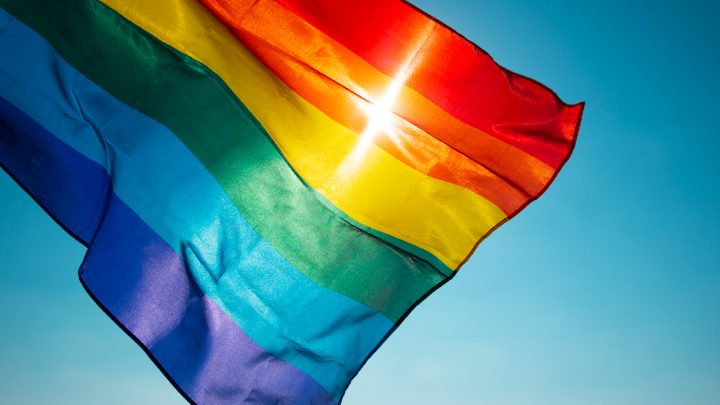Pride Month 2020 may be coming to an end, but for the emerging legal cannabis industry, the opportunities to reach and connect with LGBTQ+ consumers are just beginning.
The bond between the LGBTQ+ community and the cannabis industry stretches back to the beginning days of the legalization movement. Spurred by marijuana’s ability to treat the devastating symptoms of AIDS and side effects from aggressive medications, San Francisco LGBTQ+ activists spearheaded many of the earliest fights to decriminalize marijuana with help from the likes of Gilbert Baker, creator of the Rainbow Flag, and Cleve Jones, founder of The Names Project. In 1996, Dennis Peron helped write California Proposition 215, which became the first statewide approval of medical marijuana.
Join the Green Horizons mailing list
Get the latest insights on cannabis and holistic health delivered straight to your inbox.
“Cannabis legalization was really sparked by the LGBTQIA community, and so I’ve felt a responsibility to continue providing representation as I’ve built my business. As a femme-presenting lesbian, it is critical for me to be visible as such so that others can see they also have a place in the industry,” said Andrea Brooks, founder & CEO of Sava.
The intertwined history of cannabis legalization and the LGBTQ+ community suggests a huge opportunity for the cannabis industry. Green Horizons, a consumer insights firm focused on research for the cannabis and holistic health industries, and SPI Marketing, a leading LGBTQ+ marketing agency, predict that LGBTQ+ consumers will be a major force in the continued growth of the legal cannabis industry.
Six Reasons Why the Cannabis Industry Should Prioritize the LGBTQ+ Opportunity:
1) Already, LGBTQ+ consumer over-index on using cannabis. According to Green Horizon’s Cultivating the Cannabis Market report, 28% of U.S. adults 18+ report using cannabis weekly, compared to 43% of LGBTQ+ consumers.
2) Like cannabis users overall, LGBTQ+ cannabis users are gravitating towards dispensaries: 6 in 10 (58%) buy their cannabis at a dispensary, compared to 34% who buy through an individual dealer.
3) Younger consumers are a core target for cannabis, with half (47%) of 18-34 year-olds reporting ever using cannabis, compared to 22% among 50+. Younger Americans are also more likely to identify as LGBTQ+ in the survey (13%, vs 7% of those 35+), creating a perfect storm of opportunity for the burgeoning industry.
4) The LGBTQ community are high velocity consumers with both enthusiasm and opinions, therefore also making them influential. In the emerging and cluttered landscape of cannabis brands, the LGBTQ+ community offers companies a targeted and highly social brand platform to build brand recognition and demand.
5) LGBTQ+ consumers are increasingly demanding authenticity, especially the Gen Z and millennial segments. Attention to detail and inclusion of both community and trade are essential in building a smart, sustainable approach to this consumer, and brands that do it well will be rewarded.
6) Prioritizing the LGBTQ+ market has proven hugely effective for other industries. For example, in the spirits industry, Absolut jumped into the LGBTQ+ market around 1981 because they saw they had a visible customer base in gay bars, and they understood and recognized the potential. The reward for being the first brand in the market was authenticity and a massive lead in brand recognition.
With cannabis legalization happening state-by-state, cannabis marketing must adopt targeted, market-specific approaches—and many of the markets where cannabis is legal have large and culturally influential LGBTQ+ and other diverse communities. Gaining insights into this community and turning those insights into curated local and online strategies, influencers, and sponsorship activations, not just during Pride but throughout the year at LGBTQ+ events, offer tremendous opportunity to emerging cannabis brands to connect with this eager and highly valuable consumer segment. With the right strategy, LGBTQ+ influencers can become cannabis’ most impactful brand advocates, driving awareness and market share.
“As a lesbian who has consistently operated in industries dominated by straight white men, I view the LGBTQIA community not only as customers but, more importantly, fellow warriors and as family,” said Tracey Mason, CEO of House of Saka infused beverages. “The culture of inclusion and respect we’ve nurtured at House of Saka has been shaped and, indeed, afforded by the rights that the LGBTQIA community has so valiantly fought for and we are grateful. Every day.”
To learn more about Green Horizons’ research for the cannabis industry, click here.
To learn more about SPI Marketing’s work among LGBTQ+ consumers, click here.
Authors:
Adriana Waterston, SVP, Insights & Strategy, Green Horizons
Scott Seitz, CEO, SPI Marketing






